Difference between revisions of "Zebu leather"
m |
|||
| (6 intermediate revisions by one user not shown) | |||
| Line 10: | Line 10: | ||
==Zebu leather - Zebu hides== | ==Zebu leather - Zebu hides== | ||
| − | + | Zebus are domesticated cattle, which is mainly kept in the tropical and subtropical climate. Originally from the Indian subcontinent, they are now also widely spread in Brazil and many other tropical and subtropical regions. | |
| − | Due to the hunchback in the neck, the skins of Zebus have a disadvantage. Since the hunchback cannot be flattened in the [[tannery]], it would get stuck in a lot of the tannery machines. Therefore, the hump is cut off and roughly sutured so that the skin does not tear in this area during the [[leather production|working | + | Only about 5% of the leather produced in Brazil is processed into [[Full grain leather||full-grain leather]]. 70% is processed as [[Embossed leather#Reasons for embossing leather: Correction of the leather grain pattern|corrected grain]] and 20% as low quality leather. In Europe, almost all cowhide is produced as [[Full grain leather|full-grain leather]], and in Argentina, around 90% of the production results are full-grain leather. |
| + | |||
| + | Due to the hunchback in the neck, the skins of Zebus have a disadvantage. Since the hunchback cannot be flattened in the [[tannery]], it would get stuck in a lot of the tannery machines. Therefore, the hump is cut off and roughly sutured so that the skin does not tear in this area during the [[leather production|working stages]] in the [[tannery]]. Thus, zebu skins have a longer rip in the skin, which leads to a higher [[leather cutting waste]]. This rip is also called "hump hole". | ||
<p align=center> | <p align=center> | ||
| − | [[bild: | + | [[bild:Zebu-hump-hole-leather.jpg|500px]] |
| − | + | ||
</p> | </p> | ||
<p align=center> | <p align=center> | ||
| − | ''Characteristic | + | ''Characteristic sewn up hump hole in a zebu skin due to the hump in a [[tannery]].'' |
</p> | </p> | ||
<p align=center> | <p align=center> | ||
| − | [[bild: | + | [[bild:Zebu_01.jpg|500px]] |
</p> | </p> | ||
<p align=center> | <p align=center> | ||
| − | [[bild: | + | [[bild:Zebu_02.jpg|500px]] |
</p> | </p> | ||
<p align=center> | <p align=center> | ||
| − | '' | + | ''Characteristic neck cut of a 5.65 [[Measures and weights|square metre]] zebu skin from the [[tannery]] Mastrotto in Brazil.'' |
</p> | </p> | ||
| − | < | + | <p align=center> |
| + | [[bild:Zebu-07.jpg|500px]] | ||
| + | </p> | ||
| + | <p align=center> | ||
| + | [[bild:Zebu-09.jpg|500px]] | ||
| + | </p> | ||
| + | <p align=center> | ||
| + | ''Zebu cattle with its distinctive neck in Brazil.'' | ||
| + | </p> | ||
| Line 41: | Line 50: | ||
<br> | <br> | ||
<p align=center> | <p align=center> | ||
| − | <flashow> | + | <flashow>//www.youtube.com/v/-tJtZmJCWLw&fs=1&color1=0x660000&color2=0x550000&border=1|width=500|height=281,25</flashow> |
</p> | </p> | ||
<p align=center> | <p align=center> | ||
Latest revision as of 18:42, 26 October 2022
Zebu leather - Zebu hides
Zebus are domesticated cattle, which is mainly kept in the tropical and subtropical climate. Originally from the Indian subcontinent, they are now also widely spread in Brazil and many other tropical and subtropical regions.
Only about 5% of the leather produced in Brazil is processed into |full-grain leather. 70% is processed as corrected grain and 20% as low quality leather. In Europe, almost all cowhide is produced as full-grain leather, and in Argentina, around 90% of the production results are full-grain leather.
Due to the hunchback in the neck, the skins of Zebus have a disadvantage. Since the hunchback cannot be flattened in the tannery, it would get stuck in a lot of the tannery machines. Therefore, the hump is cut off and roughly sutured so that the skin does not tear in this area during the working stages in the tannery. Thus, zebu skins have a longer rip in the skin, which leads to a higher leather cutting waste. This rip is also called "hump hole".
Characteristic sewn up hump hole in a zebu skin due to the hump in a tannery.
Characteristic neck cut of a 5.65 square metre zebu skin from the tannery Mastrotto in Brazil.
Zebu cattle with its distinctive neck in Brazil.
Video about leather of different animal species
Leather of different animal species - Exotic leather
Additional information







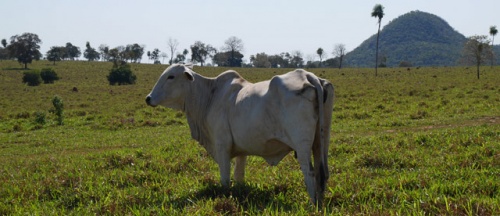
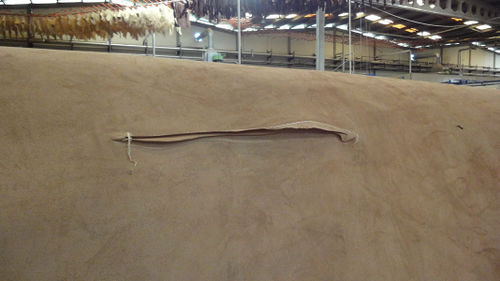
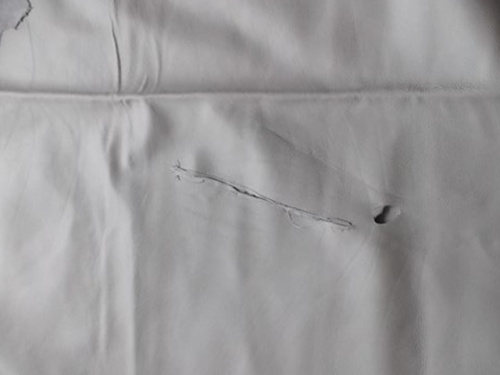
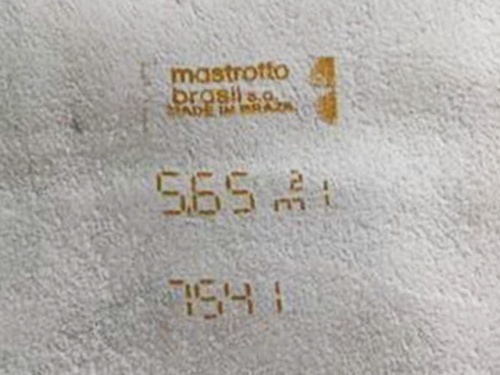
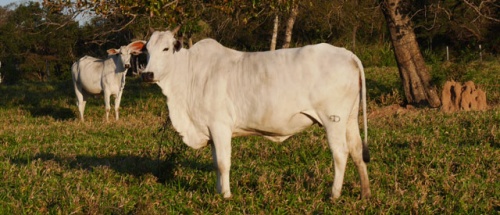
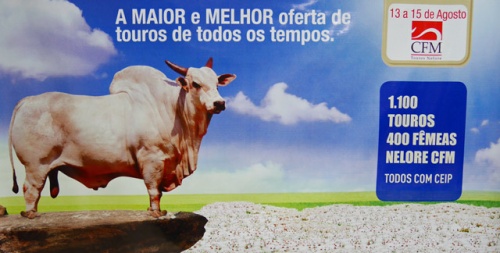

 a kotori web solution
a kotori web solution